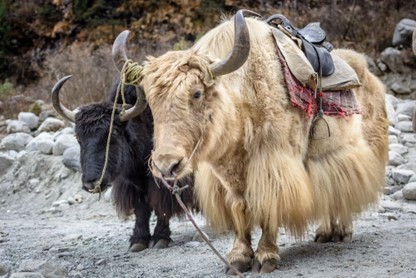Himalayan Yak
2022 NOV 29
Preliminary >
Environment and Ecology > Species extinction & protection > Species in news

Why in news?
- The Himalayan yak has been accepted as a ‘food animal’ by the scientific panel of Food Safety and Standard Authority of India (FSSAI), after recommendation from Department of Animal Husbandry and Dairying (DAHD).
- Food Animals are those that are raised and used for food production or consumption by humans.
- The categorisation is expected to help check the decline in the population of the high-altitude bovine animal by making it a part of the conventional milk and meat industry
About Himalayan Yak:
- The Yak belongs to the Bovini tribe, which also includes bison, buffaloes, and cattle.
- It can tolerate temperatures as low as-40 degrees Celsius.
- Adapted for living at high altitudes, they have long hair that hangs off their sides like a curtain, sometimes touching the ground.
- Compared with domestic cattle, the rumen of yaks is unusually large, which allows them to consume greater quantities of low-quality food at a time, and to ferment it longer so as to extract more nutrients.
- They are known as the lifeline of pastoral nomads in high altitudes of Himalayan region.
- Yaks are traditionally reared under a transhumance system which is primitive and unorganized.
Habitat:
- They are endemic to the Tibetan Plateau and the adjacent high-altitude regions.
- Yaks are most comfortable above 14,000 feet.
Yak-rearing States/UTs of India:
- Arunachal Pradesh, Sikkim, Uttarakhand, Himachal Pradesh, Jammu & Kashmir and Ladakh.
PRACTICE QUESTION:
Consider the following statements regarding Himalayan Yak:
1. They are traditionally reared under a transhumance system
2. Food Safety and Standard Authority of India (FSSAI) has recently approved the Himalayan Yak as a ‘food animal’.
Which of the statements given above is/are correct?
(a) 1 only
(b) 2 only
(c) Both 1 and 2
(d) Neither 1 nor 2
Answer
